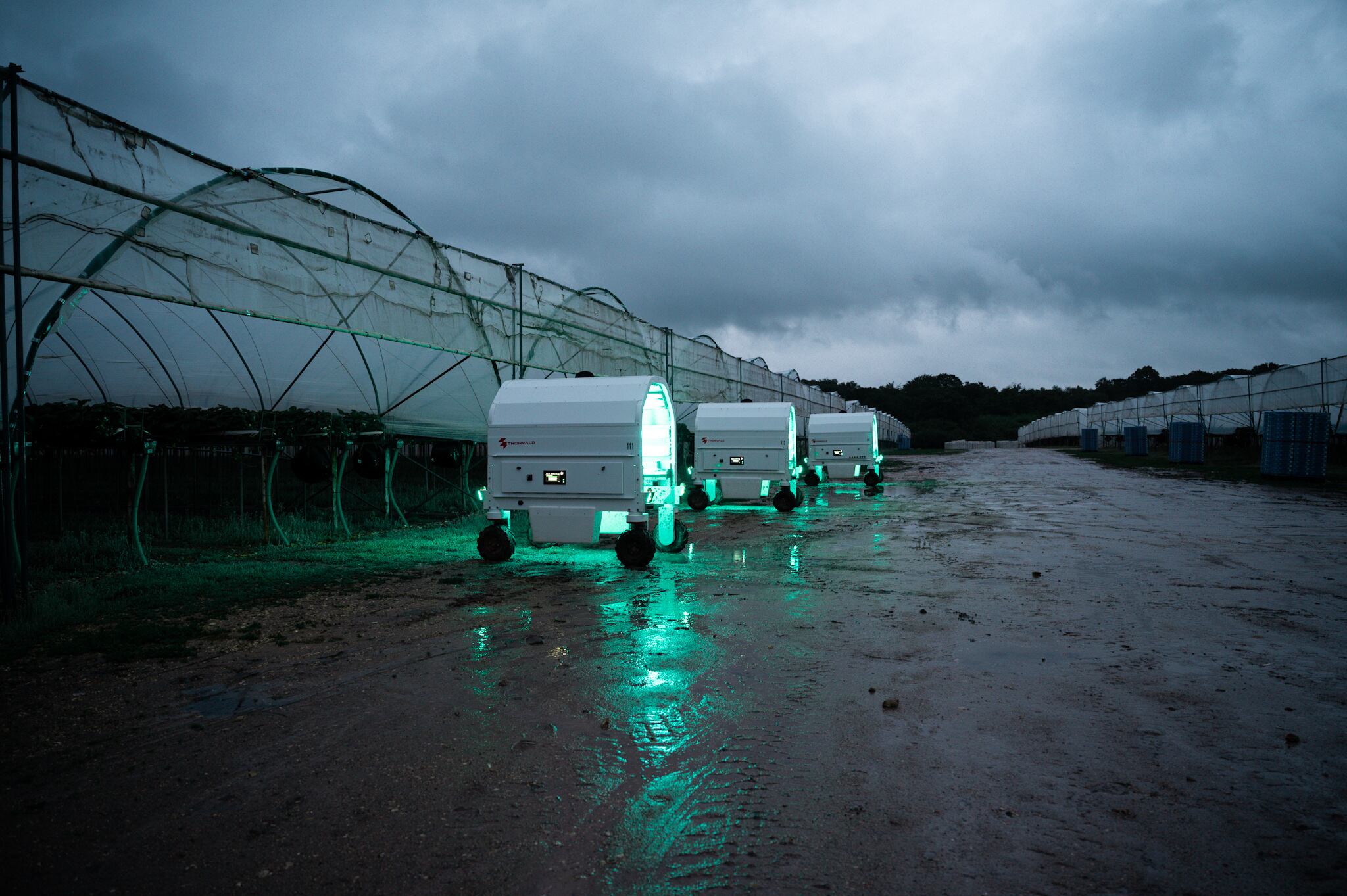California-based agtech start-up TRIC Robotics closed its seed round with $5.5 million in funding to spotlight a pesticide-free way to treat strawberries through automation.
Founded in 2017, TRIC makes automated tractor-sized agriculture robots, called Luna, that use UV light to treat strawberry fields for fungi, like powdery mildew and botrytis, Adam Stager, CEO of TRIC Robotics, told AgTechNavigator. The agtech company expanded Luna’s capability to treat lygus bugs (i.e., tarnished plant bugs) — a common pest problem for strawberry growers — through an add-on vacuum to its robots.
TRIC is focusing on strawberries due to “the big problem” facing growers, including insecticide and herbicide resistance and lack of new chemicals to treat pests and diseases, Stager explained. Strawberries ranked second, behind spinach, in the Environmental Working Group’s Dirty Dozen list, which ranks fruits and vegetables that are most contaminated with pesticides.
“They do not make the chemicals for specialty crops. They make them for the commodities generally, and then they get relabeled for specialty. And what that means is a lot of these specialty crop farmers do not have new chemistry coming to solve their big pest and disease problems, so they are spraying and spraying, and they are not able to get control, and that is the number one problem,” Stager elaborated.
The seed round of funding included investments from Central Coast Ventures, Embark Ventures, Garage Capital, Lucas Venture Group, Redstick Ventures, Shep Investments, Spacecadet, the SoundBoard Venture Fund, Todd and Rahul Capital, Valor Equity Partners, Version One Ventures, Undeterred Capital, and the founders of Clearpath Robotics.
Stager started TRIC with the help of two small business and innovation research grants, one from the National Science Foundation and another from the USDA’s National Institute of Food and Agriculture programme.
Will agtech adoption come in time for US farmers?
TRIC operates in the Central Coast of California and within driving distance from many of the large strawberry farms in the region, Stager noted. Nearly all (90%) of US-produced fresh strawberries come from California, according to USDA data.
Strawberry farmers in the region are not only grappling with growing challenges, but they are also facing labour issues as well, Stager said. This month, U.S. Immigration and Customs Enforcement agents raided a strawberry field in Oxnard, California, according to Reuters reporting.
“There is a lot of pressure, whether it be resistance, regulatory pressures, increasing costs and decreasing availability of labor. These are all things that I think are putting a lot of pressure on the farmers who are growing in our country. And what I’m worried about is that we won’t be able to get the adoption that we need,” Stager emphasized.
Once in the field, agtech companies can collaborate with farmers to address more of their problems, Stager explained. For instance, TRIC developed its add-on vacuum to treat lygus bugs, following requests from farmers who were using Luna for disease treatment and mentioned that they also had a pest problem, he added.
“Once automation is in the field, there is so much we can do with it. So, the big unlock was getting it there in a way that is profitable. And now that it is there, we can just add an enormous amount of value for the customer and also for our company,” Stager elaborated.




